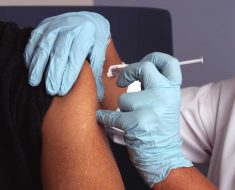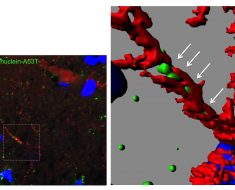Neuroblastoma, a childhood cancer that develops from neural cells on the adrenal glands, accounts for 15% of childhood cancer deaths. Almost half of children with high-risk neuroblastoma harbor extra copies of the gene MYCN (MYCN amplified), the primary driver of neuroblastoma and its resistance to therapy.
“Treating neuroblastoma by directly targeting MYCN has been challenging,” said Dr. Eveline Barbieri, corresponding author of a recent study published in the journal Nature Communications and assistant professor of pediatrics — hematology and oncology at Baylor College of Medicine and Texas Children’s Hospital. “In this study we investigated new strategies to improve the survival of children with MYCN amplified neuroblastoma by looking into metabolic vulnerabilities that we could exploit to overturn these tumors’ resistance to therapy.”
Barbieri and her colleagues used an unbiased, metabolomics analysis to compare the metabolic profiles of MYCN-amplified neuroblastomas to the profiles of non MYCN-amplified neuroblastomas. The results of their innovative approach showed that there were important differences between tumor cell utilization of specific nutrients for tumor growth in these two tumor groups.
“We found that MYCN amplification rewires a tumor’s lipid metabolism in a way that promotes the use and biosynthesis of fatty acids, a type of lipid cells can use as a source of energy,” Barbieri said. “Cells with extra copies of MYCN depend highly on fatty acids for their survival. We confirmed this both in MYCN-amplified cell lines and in MYCN- amplified patient tumor samples.”
Barbieri and her colleagues hypothesized that MYCN reroutes lipid metabolism so that fatty acids are readily available to cancer cells, thereby promoting tumor cell growth.
Looking into the mechanism
“When we investigated what prompted MYCN-amplified neuroblastomas to rely on fatty acids to grow, we discovered that MYCN directly upregulates or enhances the production of fatty acid transport protein 2 (FATP2), a molecule that mediates cellular uptake of fatty acids,” Barbieri said. “We then asked, what would happen if we interfered with FATP2 function in MYCN-amplified neuroblastomas?”
Source: Read Full Article





